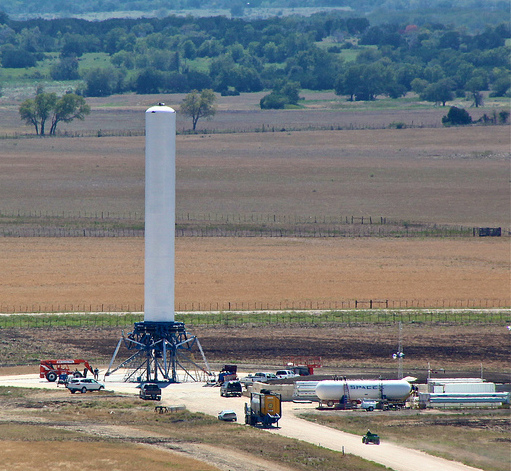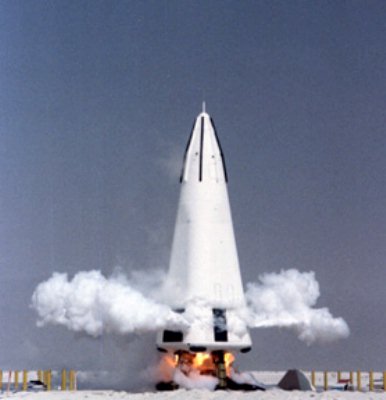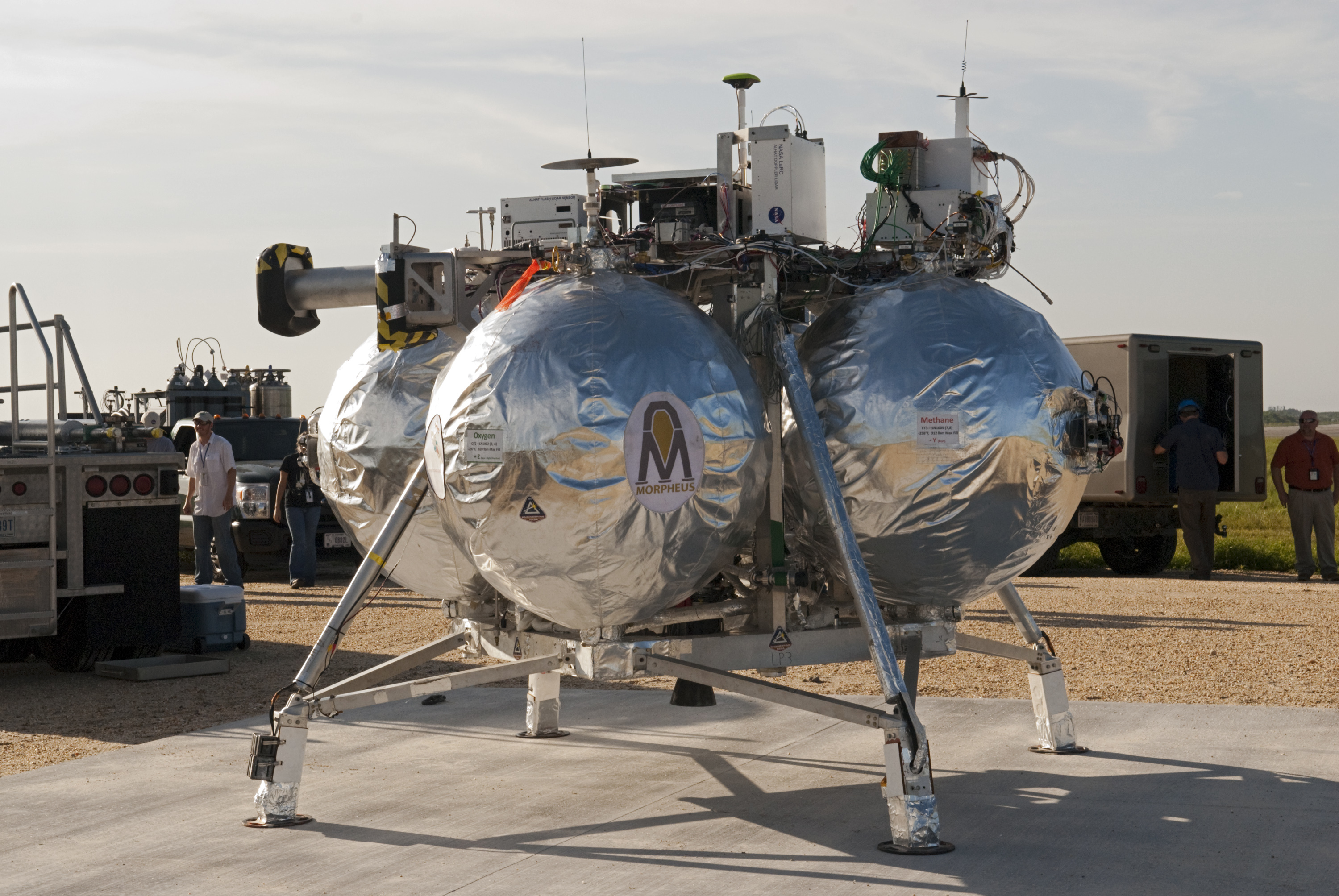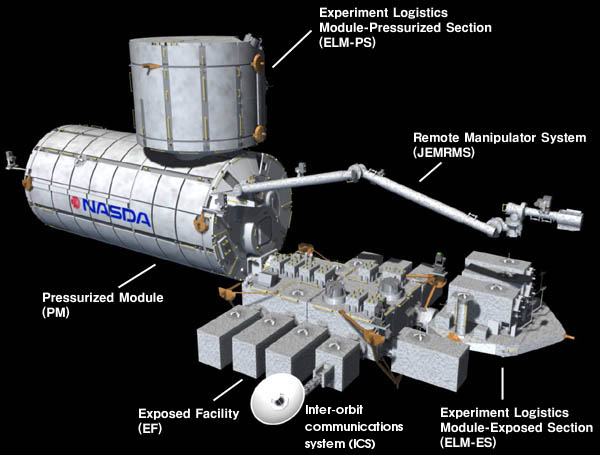|
Quad (rocket)
In rocketry, the Armadillo Aerospace Quad vehicle called Pixel is a computer-controlled VTVL rocket that was used in 2006 to compete in the Lunar Lander Challenge. General description The quad vehicle design is a pressure fed in blow-down mode from an initial pressure of 320 psi for level 1 (400 psi level 2). The cold gas vernier engines are cross-fed by gas drawn from ullage space of the opposite tank. The vehicle was able to transfer propellant through connecting pipes between opposite tanks by controlling ullage pressures with the thrusters; this helps it balance, minimizing gas use. The main engine had two-axis thrust vectoring. The vehicle was fully computer controlled; with guidance from GPS and fiber optic gyros. Specification The specification for Pixel/Texel for level 1: * Width: ~1.9 m (~75 inches) * Height: ~1.9 m (~75 inches) * Dry Weight: 650 pounds * Gross Lift Off Weight (GLOW): ~1500 pounds (360 pounds ethanol, ~500 LOX) * Payload: 55 pounds * Engines: 1 (+ 4 ... [...More Info...] [...Related Items...] OR: [Wikipedia] [Google] [Baidu] |
Jet Propulsion Laboratory
The Jet Propulsion Laboratory (JPL) is a federally funded research and development center and NASA field center in the City of La Cañada Flintridge, California, United States. Founded in the 1930s by Caltech researchers, JPL is owned by NASA and managed by the nearby California Institute of Technology (Caltech). The laboratory's primary function is the construction and operation of planetary robotic spacecraft, though it also conducts Earth-orbit and astronomy missions. It is also responsible for operating the NASA Deep Space Network. Among the laboratory's major active projects are the Mars 2020 mission, which includes the '' Perseverance'' rover and the '' Ingenuity'' Mars helicopter; the Mars Science Laboratory mission, including the '' Curiosity'' rover; the InSight lander (''Interior Exploration using Seismic Investigations, Geodesy and Heat Transport''); the ''Mars Reconnaissance Orbiter''; the '' Juno'' spacecraft orbiting Jupiter; the '' SMAP'' satellite for earth ... [...More Info...] [...Related Items...] OR: [Wikipedia] [Google] [Baidu] |
Rockets And Missiles
A rocket (from it, rocchetto, , bobbin/spool) is a vehicle that uses jet propulsion to accelerate without using the surrounding air. A rocket engine produces thrust by reaction to exhaust expelled at high speed. Rocket engines work entirely from propellant carried within the vehicle; therefore a rocket can fly in the vacuum of space. Rockets work more efficiently in a vacuum and incur a loss of thrust due to the opposing pressure of the atmosphere. Multistage rockets are capable of attaining escape velocity from Earth and therefore can achieve unlimited maximum altitude. Compared with airbreathing engines, rockets are lightweight and powerful and capable of generating large accelerations. To control their flight, rockets rely on momentum, airfoils, auxiliary reaction engines, gimballed thrust, momentum wheels, deflection of the exhaust stream, propellant flow, spin, or gravity. Rockets for military and recreational uses date back to at least 13th-century China. S ... [...More Info...] [...Related Items...] OR: [Wikipedia] [Google] [Baidu] |
Reusable Launch Systems
Reusability is a term in computer science. Reusability may also refer to: *The quality of being fit for reuse *Reusable packaging Reusable packaging is manufactured of durable materials and is specifically designed for multiple trips and extended life. A ''reusable package'' or container is “designed for reuse without impairment of its protective function.” The term ret ... See also * * {{disambiguation ... [...More Info...] [...Related Items...] OR: [Wikipedia] [Google] [Baidu] |
Grasshopper (rocket)
Falcon 9 prototypes were experimental flight test reusable rockets that performed vertical takeoffs and landings. The project was privately funded by SpaceX, with no funds provided by any government until later on. Two prototypes were built, and both were launched from the ground. The earliest prototype was ''Grasshopper''. It was announced in 2011 and began low-altitude, low-velocity hover/landing testing in 2012. ''Grasshopper'' was tall and made eight successful test flights in 2012 and 2013 before being retired. A second prototype of Falcon 9 was the larger and more capable Falcon 9 Reusable Development Vehicle (F9R Dev, also known as F9R Dev1) based on the Falcon 9 v1.1 launch vehicle. It was tested at higher altitudes and was capable of much higher velocity but was never tested at high velocity. The F9R Dev1 vehicle was built in 2013–2014 and made its first low-altitude flight test on 17 April 2014; it was lost during a three-engine test at the McGregor test site on ... [...More Info...] [...Related Items...] OR: [Wikipedia] [Google] [Baidu] |
CORONA (SSTO)
CORONA is a single-stage-to-orbit launch vehicle capable of performing vertical takeoff and landing. It was developed by OAO GRTs Makeyev from 1992 to 2012. However, the development was declined due to lack of funding. In 2016, the company announced plans to resume the development of the CORONA vehicle. Overview CORONA is intended for launching payloads to low Earth orbit with an altitude of . It has a launch mass of and is intended for launching payloads weighing up to with traditional use or up to with a special scheme for launching into low Earth orbit. However, the payload capacity goes down to and up to respectively when launching from Russia. With the use of reusable boosters that form a launch complex with it, the launch vehicle provides launching into orbits with an inclination of up to 110° up to altitudes of and returning from them if necessary. See also * Lockheed Martin X-33 * Blue Origin New Shepard * Quad (rocket) * Zarya * SpaceX reusable launch system ... [...More Info...] [...Related Items...] OR: [Wikipedia] [Google] [Baidu] |
Zarya (spacecraft)
The Zarya spacecraft () was a secret Soviet project of the late 1980s aiming to design and build a large crewed vertical-takeoff, vertical-landing (VTVL) reusable space capsule, a much larger replacement for the Soyuz (spacecraft). The project was developed during 1985–1989 years by Energia corporation until it was shelved in 1989, "on the eve of the Soviet Union's collapse" due to lack of funding. The name of the project was later reused by the Zarya space station module which served as the first component of International Space Station in 1998. Design The Zarya spacecraft would have differed from all previous spacecraft by having an array of a dozen rocket engines for making a soft landing upon return to Earth, without using a parachute. Mission Zarya spacecraft would have brought crew and supplies to ''Mir'' or supplies only in automated mode. It would have had a normal crew of one or two and offered the possibility of carrying a maximum of eight to twelve if used as ... [...More Info...] [...Related Items...] OR: [Wikipedia] [Google] [Baidu] |
McDonnell Douglas DC-X
The DC-X, short for Delta Clipper or Delta Clipper Experimental, was an uncrewed prototype of a reusable single-stage-to-orbit launch vehicle built by McDonnell Douglas in conjunction with the United States Department of Defense's Strategic Defense Initiative Organization (SDIO) from 1991 to 1993. Starting 1994 until 1995, testing continued through funding of the US civil space agency NASA. In 1996, the DC-X technology was completely transferred to NASA, which upgraded the design for improved performance to create the DC-XA. Background According to writer Jerry Pournelle: "DC-X was conceived in my living room and sold to National Space Council Chairman Dan Quayle by General Graham, Max Hunter and me." According to Max Hunter, however, he had tried hard to convince Lockheed Martin of the concept's value for several years before he retired. Hunter had written a paper in 1985 entitled "The Opportunity", detailing the concept of a Single-Stage-To-Orbit spacecraft built with l ... [...More Info...] [...Related Items...] OR: [Wikipedia] [Google] [Baidu] |
Kankoh-maru
The is a proposed vertical takeoff and landing (VTVL), single-stage-to-orbit (SSTO), reusable launch system ( rocket-powered spacecraft). According to a document from July 1997, it would have been manufactured by Kawasaki Heavy Industries and Mitsubishi Heavy Industries, with its formal name being the Kawasaki S-1. Overview The concept was created by the in 1993. This development cost was estimated ¥2.67 trillion ( $28 billion) in 1995. The name '' Kankō Maru'' is derived from the first steam-powered vessel in Edo-era Japan. See also * Chrysler SERV * VentureStar * Reusable Vehicle Testing program by JAXA The is the Japanese national air and space agency. Through the merger of three previously independent organizations, JAXA was formed on 1 October 2003. JAXA is responsible for research, technology development and launch of satellites into orb .../ ISAS * Blue Origin New Shepard * Falcon 9 Full Thrust References External links Encyclopedia Astronaut ... [...More Info...] [...Related Items...] OR: [Wikipedia] [Google] [Baidu] |
Blue Origin New Shepard
New Shepard is a fully reusable suborbital launch vehicle developed by Blue Origin for space tourism. The vehicle is named after Alan Shepard, the first American astronaut in space. The vehicle is capable of vertical takeoff and vertical landing, and can carry a crew. The first uncrewed test flight of the New Shepard vehicle was in 2015. Blue Origin began testing prototype engines and vehicles in 2006 and completed full-scale engine development in 2015. Testing continued in 2016 and 2017, and Blue Origin planned its first crewed test flight for 2018, but it was delayed until 2021. As of 4 August 2022, New Shepard has flown 32 passengers into space. Tickets for commercial flights began to be sold on May 5, 2021, for flights carrying up to six people. New Shepard is a one-stage rocket consisting of a crew capsule and a booster rocket. The capsule can seat six passengers. The booster rocket, powered by a BE-3 liquid hydrogen and liquid oxygen engine, propels the capsule to an ... [...More Info...] [...Related Items...] OR: [Wikipedia] [Google] [Baidu] |
Project Morpheus
Project Morpheus was a NASA project that began in 2010 to develop a vertical takeoff and vertical landing (VTVL) test vehicle called the Morpheus Lander. It is intended to demonstrate a new nontoxic spacecraft propellant system (methane and oxygen) and an autonomous landing and hazard detection technology. The prototype planetary lander is capable of autonomous flight, including vertical takeoff and landings. The vehicles are NASA-designed robotic landers that will be able to land and take off with of cargo on the Moon. The prospect is an engine that runs reliably on propellants that are not only cheaper and safer here on Earth, but could also be potentially manufactured on the Moon and Mars. (See: In-situ resource utilization.) The Alpha prototype lander was manufactured and assembled at NASA's Johnson Space Center (JSC) and Armadillo Aerospace's facility near Dallas. The prototype lander is a "spacecraft" that is about in diameter, weighs approximately and consists of ... [...More Info...] [...Related Items...] OR: [Wikipedia] [Google] [Baidu] |
JAXA
The is the Japanese national air and space agency. Through the merger of three previously independent organizations, JAXA was formed on 1 October 2003. JAXA is responsible for research, technology development and launch of satellites into orbit, and is involved in many more advanced missions such as asteroid exploration and possible human exploration of the Moon. Its motto is ''One JAXA'' and its corporate slogan is ''Explore to Realize'' (formerly ''Reaching for the skies, exploring space''). History On 1 October 2003, three organizations were merged to form the new JAXA: Japan's Institute of Space and Astronautical Science (ISAS), the National Aerospace Laboratory of Japan (NAL), and National Space Development Agency of Japan (NASDA). JAXA was formed as an Independent Administrative Institution administered by the Ministry of Education, Culture, Sports, Science and Technology (MEXT) and the Ministry of Internal Affairs and Communications (MIC). Before the merger ... [...More Info...] [...Related Items...] OR: [Wikipedia] [Google] [Baidu] |






